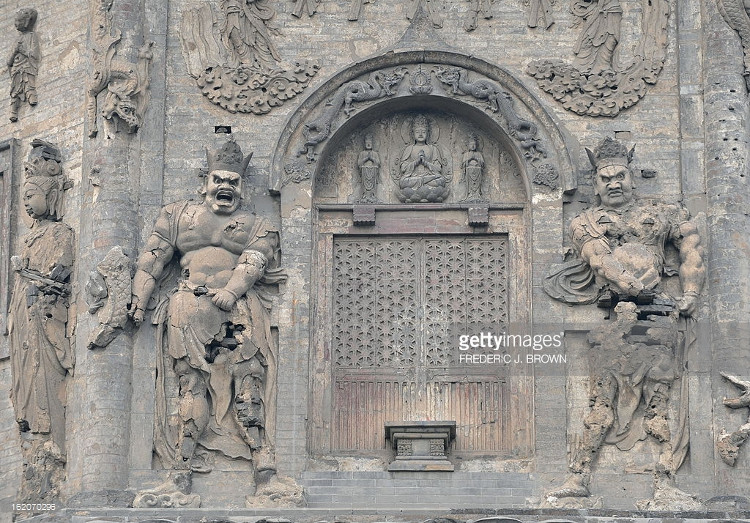Palace of 1,000 years of the Khin dynasty in China
The palace built by the Khiet Dan under the Lieu period has a total area of more than 200m 2 , which is a place to avoid summer heat for royalty and courtiers.
Archaeologists have discovered traces of a role as the summer retreat of the Chinese king, Newsweek, on January 11. In order to avoid heat, each year from mid-April to mid-July, the Liaoning emperor brought the royal family with high-ranking mandarins to the mountain range now belonging to the Inner Mongolia Autonomous Region, China.

The cathedral works under the Liaoning Dynasty in Beijing.(Photo: Frederic J. Brown).
The archaeological team found more than 100 structural components in the relics in Da Luan District, Inner Mongolia Autonomous Region, including glazed tiles, ceramics and copper nails. They recognized the foundation of 12 buildings with a total area of more than 232m2. Ge Zhiyong, a researcher at the Inner Mongolia Autonomous Region Archaeological Institute, said the excavated artifacts from the site help determine the palace built in the middle of the Liaoning Dynasty.
The discovery of the palace will help archaeologists gain new insights into both architecture and cultural customs of Liao. Large-scale excavations will be conducted at the site.
Trieu Lieu was founded by Khiet Dan. This is a nomadic race distributed in Mongolia today and many areas in northern China, Russia and South Korea. On February 27, 907, the leader of the Sisters of the Danes was Gia Law A Bao Co, proclaiming "Thien emperor" . On March 17, 916, Gia Law A Bao Co posted the title of "Khiet Dan". In 947, the national name was changed to "Dai Lieu". In 1125, the Liao Dynasty collapsed and was destroyed by the Jin Dynasty.
Although originally there was no written language to express the original Mongolian dialect, Lieu Lieu developed two types of writing with many characteristics like modern Chinese characters. The Liaoning emperors continued to expand their territory but focused on maintaining the pure royal bloodline, stipulating that the emperor was not allowed to marry people from the Khitan ethnic groups. However, the Liao's women had many political influences with at least three regents of each regent.
- 4 periods of heavenly action in the Forbidden City
- What's special about the Lunar New Year in the Nguyen Dynasty?
- Discover the palace of Kublai Khan under the Forbidden City
- Ruins of Qin Shihuang Palace surfaced on the beach
- Rare items of the Nguyen Dynasty in Saigon
- Strange story 'cohabitation' in the Royal Qing Dynasty
- Rare images return to Beijing more than 100 years ago
- The man who possessed 'China first willing' shocked the ancient world
- Found 16 right hands that were severed, buried in the ancient palace
- Xiang Yu's thousands of years of unjustness
- Admire the 10 most magnificent palaces in the world
- Discovering ancient tombs for nearly 2000 years in China
 Discovered an ancient centipede fossil 99 million years old
Discovered an ancient centipede fossil 99 million years old Discovered bat-like dinosaurs in China
Discovered bat-like dinosaurs in China Discovered a 200-year-old bronze cannon of the coast
Discovered a 200-year-old bronze cannon of the coast Discover 305 million-year-old spider fossils
Discover 305 million-year-old spider fossils